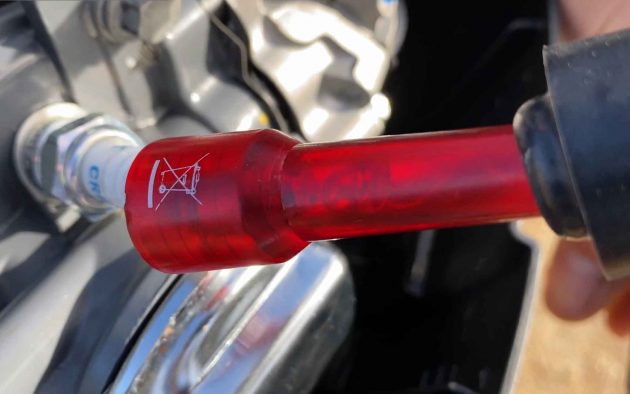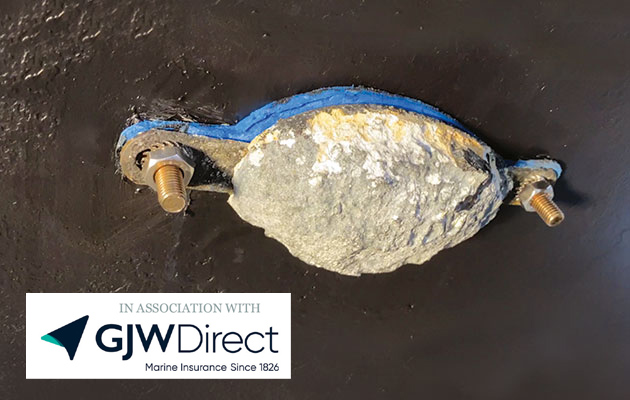Small four-stroke outboard engines are pretty simple. Max McHugh of Marine Matters explains how to fix the most common problems, from gummed-up carburettors to broken thermostats. IN ASSOCIATION WITH GJW DIRECT
This is our guide to basic troubleshooting steps for a small petrol four-stroke outboard engine. If you’ve got a problem, have a look at our guides to finding the problem in a diesel fuel system or electrical system.
Fuel
The main reason for your outboard engine not working will be the fuel system, often because fuel has been left in the engine over winter. The fuel goes through a chemical reaction producing ethanol, which will prevent the engine from running. There may also be dirt blocking the filter, lines or carburettor. To clean, remove the flywheel cover and engine cowling, and then undo the fuel tank.
Take the tank out and remove the fuel line, draining the tank into a bucket. Flush the tank through with clean fuel. Check the filter is clear and rinse with clean fuel if needed before reconnecting the tank.

Four stroke outboard fuel tank
Carburettor
Next check the outboard’s carburettor. Turn off the fuel tap, then open the drain screw on the side of the carburettor and drain into a bucket. Close the drain screw, open the fuel tap and add clean fuel. If the engine still doesn’t run, you may need to clean the carb out, either with a can of carb cleaner, or at a workshop that has ultrasonic cleaning.

Four stroke outboard carburettor drain screw
Spark plug
Next check the spark plug has a spark. You can use a spark plug tester, connected between the plug and the ignition (high tension) lead. If you don’t have a tester, remove the plug, connect it to the lead, then touch it on the engine body before pulling the cord. You should be able to spot the spark. If you can’t you may need a new spark plug for your outboard.

Four stroke outboard spark plug tester
Continues below…
How to: troubleshoot your diesel engine electrics
Promotional feature in association with GJW Direct. If you're engine won't start, knowing how to find the source of the…
How to: check and change an anode
Promotional feature in association with GJW Direct. Keeping your anodes in good order prevents serious damage on board, says Rubicon…
How to repair gel coat – video guide
How to deal with gelcoat chips and achieve a perfect colour matched surface. Bruce Jacobs finds out from Mark Buckett…
Kill cord
If the kill cord is fitted correctly, it’s worth checking the stop button. It has a spring inside, but this can degrade over time, especially if the kill cord has been left attached. You may need to replace the button assembly if it doesn’t pull back in.

Four stroke outboard kill cord
Cooling system
If your outboard engine has sea water cooling (some are air cooled) and you haven’t flushed the engine for a while, you can get salt build up in the engine. Run the engine in a barrel of fresh water, or use a hose and a set of flushing earmuffs, and check the water tell-tale has a good flow before you set off. Small engines don’t have an overheat alarm but will shut off as a failsafe. If you need to check the thermostat, take it out and place it in boiling hot water, and you should be able to see the spring move. If it doesn’t, you’ll need a new one.

Four stroke outboard thermostat
Oil
Four-stroke outboard engines have an oil sump for lubrication. It should say how much oil you need. Fill it slowly and check against the sight glass, but if you do overfill it, drain into a bucket using the drain screw beneath the sight glass.

Four stroke outboard oil sight glass
End of season care
At the end of the season, don’t forget to include the outboard in your winter maintenance. Make sure you drain the fuel out of the carburettor or run it dry, and it’s also worth draining the fuel tank and giving it a clean. Leave the spark plug in to keep moisture out. If you are storing it on its side, ensure it’s on the correct side.
In association with GJW Direct
GJW Direct offers some of the most comprehensive and competitive boat insurance policies on the market. With more than 175 years in marine insurance, when you insure your yacht with us, you’re dealing with the boat insurance specialists, leaving you free to enjoy your time on the water. For more information, visit: www.gjwdirect.com

Enjoyed reading this article?
A subscription to Yachting Monthly magazine costs around 40% less than the cover price.
Print and digital editions are available through Magazines Direct – where you can also find the latest deals.
YM is packed with information to help you get the most from your time on the water.
- Take your seamanship to the next level with tips, advice and skills from our experts
- Impartial in-depth reviews of the latest yachts and equipment
- Cruising guides to help you reach those dream destinations
Follow us on Facebook, Twitter and Instagram.






